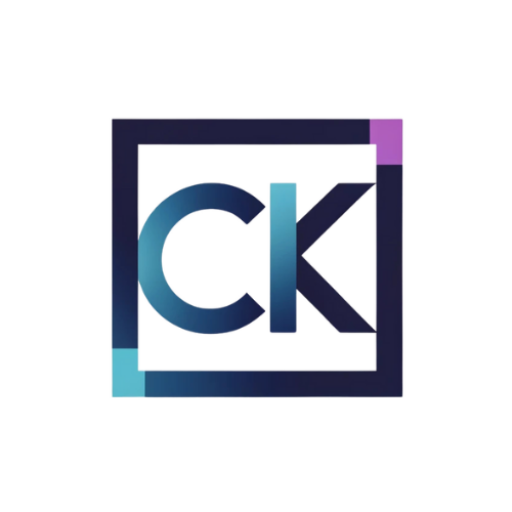Anúncios
As the job market continues to evolve in response to technological advancements and societal shifts, one trend that stands out is the increasing flexibility in work arrangements. Remote work, once seen as merely a perk for employees, has solidified its role as a viable long-term employment model. This significant shift in the way we conceptualize work has transformed how companies approach staffing, offer employment opportunities, and even attract talent.
The COVID-19 pandemic catalyzed this evolution by forcing businesses to adapt to remote work settings, and many employers have since recognized that geographic location is no longer a barrier to hiring the best candidates. This newfound flexibility allows organizations to tap into global talent pools, leading to a more diverse workforce that enriches company culture and drives innovation. Businesses can now find employees who not only possess the necessary skills but also align closely with their company values and goals.
Furthermore, the rise of remote work has presented new challenges for both employers and employees in this modern landscape. One major concern is maintaining productivity and team cohesion in a remote environment. Companies now find themselves investing in collaboration tools and communication platforms that facilitate seamless interaction among teams, regardless of their physical locations. Such investments are crucial, as they help to foster relationships, build trust, and promote a sense of belonging among remote workers.
Remarkably, as remote work becomes commonplace, employee expectations are also evolving to align with this new reality. Many employees now prioritize flexibility in their work-life balance, actively seeking arrangements that allow them to manage personal commitments alongside their professional responsibilities. Employers who can provide this level of flexibility are often rewarded with increased employee satisfaction, retention, and engagement, ultimately benefiting the organization’s overall productivity.
Another related trend that significantly impacts the job market is the rise of hybrid work models that combine remote and in-person work arrangements. This model effectively allows employees to enjoy the benefits of remote work while still experiencing the camaraderie and collaborative advantages of being in a physical office space. The hybrid model can be particularly appealing to workers who appreciate the flexibility but also value face-to-face interactions for brainstorming and engaging in team-building activities.
Anúncios
In light of these rapid changes in the job market, companies are rethinking their office spaces and operational structures. The traditional workplace is evolving to accommodate a more dynamic workforce. Organizations are now investing in redesigning office layouts that promote collaboration, creativity, and comfort, allowing employees to enjoy the best of both worlds while working remotely and in-person. This evolution is a direct reflection of a growing recognition that a simplistic, one-size-fits-all approach to work is no longer effective.
Moreover, the demand for new skill sets has never been higher due to the transition towards remote work and hybrid models becoming the norm. Employees are increasingly expected to adapt to new tools and technologies that facilitate virtual collaboration and enhance productivity in remote settings. Consequently, upskilling and reskilling initiatives are becoming increasingly crucial as organizations seek to equip their workforce with the necessary competencies to thrive in such a rapidly changing environment.
Additionally, employers are recognizing the importance of investing in mental health and wellness resources for their employees, especially in remote work settings. The isolation that some remote workers experience can lead to burnout, decreased morale, and reduced productivity. Companies that prioritize mental wellness not only create a more supportive work environment but also enhance overall productivity and employee loyalty, thereby contributing positively to the organization’s bottom line.
In recent years, diversity, equity, and inclusion (DEI) have become paramount considerations in today’s job market. Organizations are increasingly being held accountable for creating workplaces that reflect a diverse range of voices and experiences. Companies that actively pursue and foster inclusive environments tend to attract top talent and benefit from varied perspectives, which can drive innovation and spark creativity among teams.
Another significant trend worth mentioning is the growing importance of employer branding and employee value propositions. Potential candidates are now more intentional about the employers they choose to work for, often conducting research on organizational culture, values, and public perception before applying for jobs. Companies that cultivate strong employer branding that aligns with candidates’ values and expectations can attract and retain top talent more effectively.
The gig economy has also emerged as a key trend that can’t be overlooked in the context of modern employment practices. Increasingly, workers are choosing freelance or contract work over traditional employment for a variety of reasons, including the pursuit of greater autonomy, flexibility, and enhanced work-life balance. This shift has prompted businesses to rethink their workforce strategies, considering the benefits and challenges of hiring gig workers.
In the gig economy landscape, companies must navigate a myriad of regulatory frameworks and adapt to the unique needs of a non-traditional workforce. Organizations that develop clear policies and structures for engaging gig workers can harness their specialized skills and expertise effectively, creating mutually beneficial scenarios for both parties involved.
Additionally, technology continues to influence job market trends significantly, reshaping industries and roles. The introduction of automation and artificial intelligence is transforming various sectors, leading to demands for different skill sets and competencies among workers. As specific roles become automated, workers may find themselves needing to pivot and acquire new competencies to remain relevant and competitive in their fields.
Moreover, the rapid advancement of technology is fostering a culture of continuous learning and growth among employees. In today’s competitive landscape, employees are increasingly expected to engage in lifelong learning, which necessitates that organizations support their workforce in accessing training and development opportunities that align with industry trends. This focus on ongoing learning not only keeps employees engaged and satisfied but also ensures that organizations maintain a competitive edge in their respective markets.
Another important trend worth examining is the rising emphasis on soft skills in the hiring process. Skills such as emotional intelligence, adaptability, and clear communication are now highly sought after by employers in today’s job market. As teams become more diverse and work environments increasingly remote, possessing strong interpersonal skills is essential for navigating challenges and fostering meaningful collaboration among team members.
As companies adapt to these changing dynamics, the role of talent acquisition is becoming more strategic, as recruiters focus not only on skill matching but also on identifying candidates who align with the organization’s culture and values. This strategic shift requires talent acquisition professionals to adopt a more holistic approach, taking into account both hard and soft skills when evaluating potential hires.
The emphasis on upskilling, reskilling, and soft skills underlines the significance of developing a learning culture within organizations. Companies that prioritize continuous learning and development for their employees will build a more adaptable and resilient workforce that can thrive amid unpredictable changes in the marketplace. This investment pays dividends in employee engagement, satisfaction, retention, and innovation for the organization.
Furthermore, social media platforms have become critical tools for job seekers and employers alike as the job market evolves. Companies use these platforms to showcase their unique cultures, share job openings, and engage directly with potential candidates. Conversely, job seekers can leverage their online presence to effectively demonstrate their expertise, network, and directly connect with industry leaders. This interconnectedness has undeniably transformed how both parties approach the hiring process in the modern job market.
Lastly, the ongoing pandemic has acted as an accelerant for many of these trends, compelling organizations to rethink their operational strategies and employment practices in response to new challenges. As we move forward, it’s essential to closely monitor how these evolving trends continue to reshape the job market for employers and employees alike. Adapting and responding to these shifts will be critical for ensuring both parties thrive in the post-pandemic landscape.
In conclusion, the job market is undeniably changing, with remote work, hybrid models, and a heightened focus on employee well-being and diversity leading the way. These changes necessitate a reevaluation of traditional business practices, a renewed emphasis on fostering new skills and mindsets among workers, and a commitment to promoting a culture of continuous learning. By embracing these trends, companies can position themselves for success while creating inclusive, engaging workplaces that reflect the diversity and dynamism of the modern workforce. As we head into an uncertain future, the ability to adapt, innovate, and respond effectively to ongoing changes will be essential for staying competitive in the ever-evolving job market.



